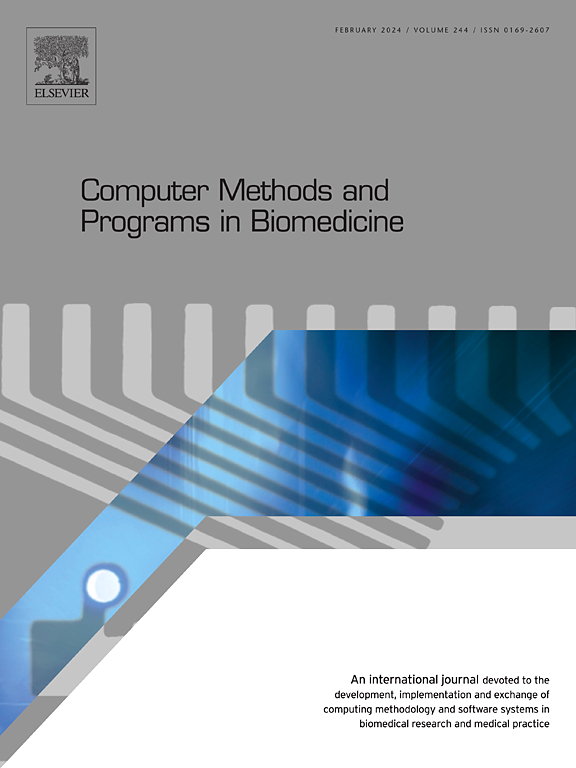不同分子量生物治疗药物皮下注射的 MPET2-mPBPK 模型:从局部尺度到全身尺度
IF 4.9
2区 医学
Q1 COMPUTER SCIENCE, INTERDISCIPLINARY APPLICATIONS
引用次数: 0
摘要
背景与目的:生物治疗药物皮下注射在制药行业引起了广泛的关注。然而,人们对不同分子量药物的吸收机制以及药物从注射部位到靶组织的输送机制了解有限。方法:我们提出MPET2-mPBPK模型来解决这一问题。该多尺度模型将从生物力学角度描述局部组织尺度皮下注射的MPET2模型与注射部位的注射后吸收模型和全身尺度的最小生理药代动力学(mPBPK)模型结合在一起。利用组织生物力学和流体动力学原理,局部MPET2模型提供了解决方案,考虑了注射过程中局部血管和初始淋巴管的组织变形和药物吸收。此外,我们还介绍了一个考虑分子量对血管吸收影响的模型,以及一个考虑淋巴管吸收的非线性模型。注射后模型预测药物在局部血管和初始淋巴管中的吸收,并将其整合到全身mPBPK模型中,以描述吸收药物在循环和淋巴系统中的药代动力学行为。结果:建立了局部组织尺度下皮下注射的生物力学过程与注射的生物治疗药物在全身尺度上的药代动力学行为的数值模型。利用该模型,我们提出了反射系数与分子量之间的明确关系,并通过皮下注射预测了不同分子量生物治疗药物的生物利用度。结论:考虑的药物吸收机制使我们能够研究不同分子量的局部药物吸收和全身药物分布的差异。该模型增强了对不同分子量药物在循环系统中的吸收机制和转运途径的理解,并具有促进计算建模在药物配方中的应用的潜力。本文章由计算机程序翻译,如有差异,请以英文原文为准。
A MPET2-mPBPK model for subcutaneous injection of biotherapeutics with different molecular weights: From local scale to whole-body scale
Background and Objective:
Subcutaneous injection of biotherapeutics has attracted considerable attention in the pharmaceutical industry. However, there is limited understanding of the mechanisms underlying the absorption of drugs with different molecular weights and the delivery of drugs from the injection site to the targeted tissue.
Methods:
We propose the MPET-mPBPK model to address this issue. This multiscale model couples the MPET model, which describes subcutaneous injection at the local tissue scale from a biomechanical view, with a post-injection absorption model at injection site and a minimal physiologically-based pharmacokinetic (mPBPK) model at whole-body scale. Utilizing the principles of tissue biomechanics and fluid dynamics, the local MPET model provides solutions that account for tissue deformation and drug absorption in local blood vessels and initial lymphatic vessels during injection. Additionally, we introduce a model accounting for the molecular weight effect on the absorption by blood vessels, and a nonlinear model accounting for the absorption in lymphatic vessels. The post-injection model predicts drug absorption in local blood vessels and initial lymphatic vessels, which are integrated into the whole-body mPBPK model to describe the pharmacokinetic behaviors of the absorbed drug in the circulatory and lymphatic system.
Results:
We establish a numerical model which links the biomechanical process of subcutaneous injection at local tissue scale and the pharmacokinetic behaviors of injected biotherapeutics at whole-body scale. With the help of the model, we propose an explicit relationship between the reflection coefficient and the molecular weight and predict the bioavalibility of biotherapeutics with varying molecular weights via subcutaneous injection.
Conclusion:
The considered drug absorption mechanisms enable us to study the differences in local drug absorption and whole-body drug distribution with varying molecular weights. This model enhances the understanding of drug absorption mechanisms and transport routes in the circulatory system for drugs of different molecular weights, and holds the potential to facilitate the application of computational modeling to drug formulation.
求助全文
通过发布文献求助,成功后即可免费获取论文全文。
去求助
来源期刊

Computer methods and programs in biomedicine
工程技术-工程:生物医学
CiteScore
12.30
自引率
6.60%
发文量
601
审稿时长
135 days
期刊介绍:
To encourage the development of formal computing methods, and their application in biomedical research and medical practice, by illustration of fundamental principles in biomedical informatics research; to stimulate basic research into application software design; to report the state of research of biomedical information processing projects; to report new computer methodologies applied in biomedical areas; the eventual distribution of demonstrable software to avoid duplication of effort; to provide a forum for discussion and improvement of existing software; to optimize contact between national organizations and regional user groups by promoting an international exchange of information on formal methods, standards and software in biomedicine.
Computer Methods and Programs in Biomedicine covers computing methodology and software systems derived from computing science for implementation in all aspects of biomedical research and medical practice. It is designed to serve: biochemists; biologists; geneticists; immunologists; neuroscientists; pharmacologists; toxicologists; clinicians; epidemiologists; psychiatrists; psychologists; cardiologists; chemists; (radio)physicists; computer scientists; programmers and systems analysts; biomedical, clinical, electrical and other engineers; teachers of medical informatics and users of educational software.
 求助内容:
求助内容: 应助结果提醒方式:
应助结果提醒方式:


